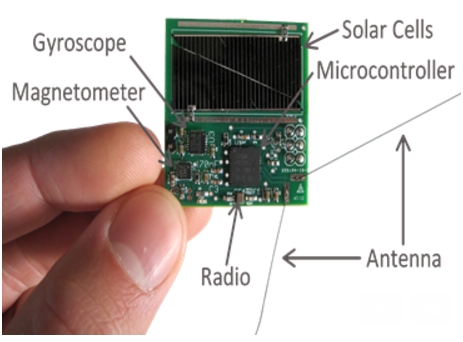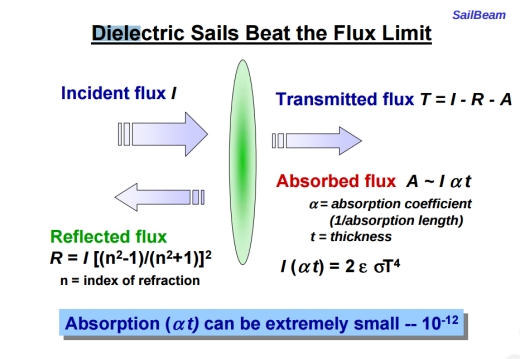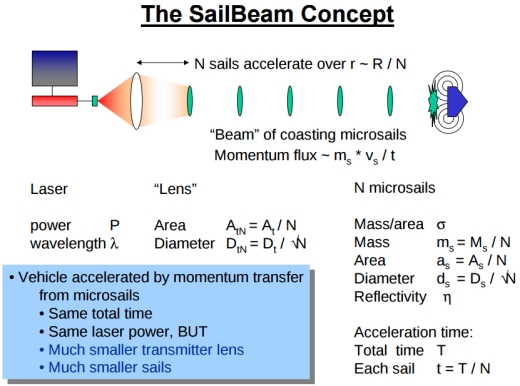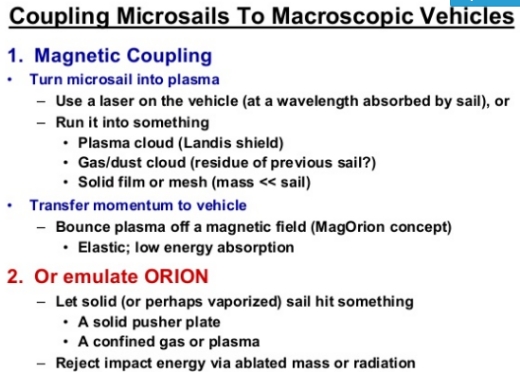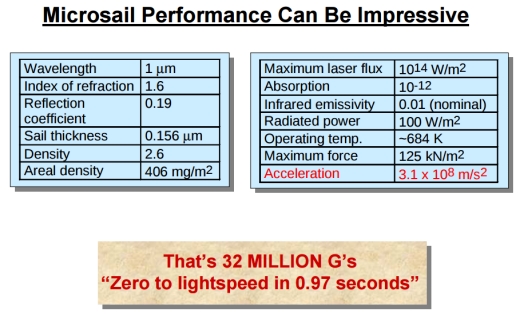Stagnant Supercivilizations and Interstellar Travel
Just how long can a civilization live? It’s a key question, showing up as a factor in the Drake Equation and possibly explaining our lack of success at finding evidence for ETI. But as Andrei Kardashev believed, it is possible that civilizations can live for aeons, curbed only by the resources available to them, opening up the question of how they evolve. In today’s essay, Nick Nielsen looks at long-lived societies, asking whether they would tend toward stasis — Clarke’s The City and the Stars comes to mind — and how the capability of interstellar flight plays into their choices for growth. Would we be aware of them if they were out there? Have a look at supercivilizations, their possible trajectories of development, and consider what such interstellar stagnation might look like to a young and questing species searching for answers.
by J. N. Nielsen
What are stagnant supercivilizations?

As far as I know there are no precise definitions of supercivilizations, but this should not surprise us as there are no precise definitions of civilization simpliciter. In his paper, “On the Inevitability and the Possible Structures of Supercivilizations” (1985), Nikolai S. Kardashev explicitly formulated two assumptions regarding supercivilizations:
“I. The scales of activity of any civilization are restricted only by natural and scientific factors. This assertion implies that all processes observed in Nature (from phenomena in the microcosmos to those in the macrocosmos and all the way to the whole Universe) may in time be utilized by civilizations, be reproduced or even somewhat changed, though of course always in accordance with the laws of Nature.
“II. Civilizations have no inner, inherent limitations on the scales of their activities. This implies that presumptions of a possible self destruction of a civilization, or of a certain restrictions on the level of its development are not factual. Actually social conflicts may in fact be resolved, while civilizations will always face problems that demand larger scales of activity.” [1]

If Kardashev was right, there being only natural and scientific restrictions on the scale of the activity of civilization, and the absence of inherent limitations on civilizations, would mean that an expanding civilization would just keep expanding, subject only to natural laws like those of general relativity and quantum theory, thermodynamics and conservation laws. Presumably, then, older expanding civilizations would eventually become supercivilizations in virtue of the scale of their activities, which would grow proportionally (or perhaps exponentially) to their age. Here we see the relationship between supercivilizations and the recurrent motif of million-year-old or even billion-year-old civilizations. But once grown to these dimensions, what then?
In a series of posts — Stagnant Supercivilizations, An Alternative Formulation of Stagnant Supercivilizations, Suboptimal Civilizations, Supercivilizations and Superstagnation, and What Do Stagnant Supercivilizations Do During Their Million Year Lifespans? — I discussed Kardashevian supercivilizations that have become stagnant—in other words, civilizations that are very old, very large, very powerful, and very advanced, but which have attained a plateau of achievement and thus have ceased to develop. Such civilizations, in a growth phase, may have taken advantage of the absence of any inherent limitation upon the scale of their activities and would have grown to utilize all the processes of nature, subject only to the laws of nature. Their growth trajectory would have described an S-curve, much like a species that converges upon the carrying capacity of its ecosystem. Having reached an equilibrium with its environment—which, in the case of a supercivilization, is the cosmos itself—the growth of a supercivilization would then be limited by galactic ecology. [2]
This seems to contradict Kardashev’s second assumption, that, “Civilizations have no inner, inherent limitations on the scales of their activities,” but the carrying capacity of the cosmos would constitute an extrinsic or exogenous limitation on the scales of a supercivilization’s activities, rather than an intrinsic or endogenous limitation. Moreover, this extrinsic limitation, which, once encountered, entails stagnation, is consistent with Kardashev’s first assumption, that a supercivilization’s activities must be, “in accordance with the laws of Nature” and are restricted by natural factors. The carrying capacity of the cosmos is the natural restriction upon the growth of supercivilizations.
If a galaxy is the ecosystem in which a supercivilization comes to maturity, then the carrying capacity of a galaxy will determine the growth and eventual stagnation of supercivilizations once carrying capacity is reached, with that carrying capacity being determined by the accessibility of available matter and usable energy at the disposal of a supercivilization. This ecological limit to the growth of supercivilizations would constitute, “natural and scientific factors,” that would restrict a supercivilization’s scale of activity, constituting a confirmation of Kardashev’s principles, and would, additionally, make the metaphor of galactic ecology literally true.
This is but one possible scenario for the stagnation of a supercivilization. Sagan and Newman suggested a scenario of supercivilization stagnation based upon the intelligent progenitor species of a civilization transcending their biological limitations and becoming effectively immortal:
“A society of immortals must practice more stringent population control than a society of mortals. In addition, whatever its other charms, interstellar spaceflight must pose more serious hazards than residence on the home planet. To the extent that such predispositions are inherited, natural selection would tend in such a world to eliminate those individuals lacking a deep passion for the longest possible lifespans, assuming no initial differential replication.” [3]
According to Sagan and Newman the result of this would be:
“…a civilization with a profound commitment to stasis even on rather long cosmic time scales and a predisposition antithetical to interstellar colonization.” [4]
I could criticize this scenario on several grounds, but my purpose here is not to engage with the argument, but to present it for exhibition as one among multiple possible sources of stagnation for advanced civilizations. The point is that even the largest, oldest, most advanced civilizations are subject to stagnation—perhaps especially subject to stagnation.

[We could pursue terraforming within our own planetary system even without interstellar travel.]
Are there hard limits to interstellar travel?
In the argument that I unfolded in What Do Stagnant Supercivilizations Do During Their Million Year Lifespans? so as to concede a point to potential critics before this was used as a cudgel against my argument, I tried to show how, even without interstellar travel, a supercivilization could provide for itself civilizational-scale stimulation. My argument was that even a supercivilization confined to its home planetary system could engage in terraforming (or its non-terrestrial equivalent) and even world-building, and so might be able to observe the development of life over biological scales of time and the development of intelligence and civilization over their respective scales of time.
My assumption in making this argument was that a civilization in a position to make scientific observations of phenomena as fundamental as the origins of life, intelligence, and civilization, eventually would formulate a vast body of scientific knowledge based on these scientific observations. All of this was mere prelude in order to ask the question that was bothering me at the time: could a supercivilization remain stagnant when it was in a position to assimilate a vast body of scientific knowledge? It seems unlikely to me that a civilization that had grown to supercivilization status in virtue of its mastery of science and technology could remain unaffected by an influx of scientific knowledge.
As I noted above, I sought to demonstrate the possibility of civilizational-scale intellectual stimulation without recourse to interstellar space travel in order to focus on what is still possible to a very old civilization even under hard limits to space travel. If such a civilization also possessed technology sufficient for interstellar travel, then the possibilities for stimulation would be all the greater, and my argument would be strengthened, so that considering the narrower question of a supercivilization stranded within its home planetary system constituted a more rigorous test of the idea of civilizational-scale scientific stimulation.
We all know that, even among scientists, even among advocates of space travel, there are those who insist upon hard limits to interstellar travel. Hence the need to make an argument without an appeal to interstellar travel. This insistence upon hard limits to interstellar travel is not my position, but I do want to try to understand the reasoning and the motivations that have led otherwise intelligent individuals to declare interstellar travel to be not merely difficult, but an insuperable impossibility (or so difficult as to be impossible for all practical purposes). What, then, are the reasons given for the impossibility or impracticality of interstellar travel? I will consider this question by way of a digression discussing the idea of the search for extraterrestrial intelligence (SETI) and what I call the SETI paradigm.

[The SETI paradigm incorporates assumptions about the likelihood of interstellar travel.]
What is the SETI Paradigm?
Among those who insist upon hard limits to interstellar travel are many advocates of SETI, which is usually conceived as searching for intelligent extraterrestrial signals, whether radio or optical or otherwise. The two positions—denial of the possibility of interstellar travel and pursuit of SETI—are tightly-coupled, as the unlikelihood of interstellar spacefaring civilization is used to argue for SETI as the only alternative to discovering other life and intelligence in the universe through space exploration.
Philip Morrison, who along with Giuseppe Cocconi wrote the first paper on the possibility of SETI, also held this view in regard to, “…real interstellar travel, where people, intelligent machines, or whatever you like, go out to colonize. You travel in space as Magellan circumnavigated the world. I do not think this will ever happen. It is very difficult to travel in space.” [5]
Perhaps the locus classicus of the SETI paradigm was to be found already in 1962, three years after the Cocconi and Morrison paper:
“…space travel, even in the most distant future, will be confined completely to our own planetary system, and a similar conclusion will hold for any other civilization, no matter how advanced it may be. The only means of communication between different civilizations thus seems to be electro-magnetic signals.” [6]
And here is another clear statement of the SETI paradigm:
“The bottom line of all this is quite simply that interstellar travel is so enormously expensive and/or perhaps hazardous, that advanced civilizations do not engage in the practice because of the ease of information transfer via interstellar communication links.” [7]
The frequency with which cautions regarding the danger of interstellar travel are employed as an argument against interstellar travel suggests that the class of persons writing against interstellar travel are risk averse, but that does not mean that all sectors of society are equally risk averse. Some individuals seek out risk in order to confront “limit-experiences” (expérience limite), and never feel so fully as alive as when facing danger, death, and the possibility of personal annihilation. [8]
If we set aside the danger of interstellar travel as an artifact of risk aversion, knowing that risk tolerance is one of those individual variations that drives natural selection, we are left with the argument that interstellar spaceflight would be too expensive and too difficult to pursue. The potential cost of interstellar travel is a matter for another essay on another occasion, but I will only observe here that we do not yet know the economics of supercivilizations, so we must keep an open mind as to whether or not interstellar missions would be prohibitively expensive. I do not think that interstellar travel would be too expensive because a fully automated space-based industrial infrastructure, in possession of the energy and materials that are available beyond planetary surfaces, would find few construction projects to be too expensive, as there would be no economic trade-offs between building starships and producing consumer goods.
The idea that interstellar travel is enormously difficult I do not dispute, though I find it strange that anyone would argue for the, “…ease of information transfer via interstellar communication links,” when these links could not facilitate communication over scales of time relevant to civilization, except for communication with the nearest stars. If there were advanced civilizations located at the nearest stars, with which we might communicate over a time scale of years or even decades, we would already know about these cosmic neighbors. If there are advanced civilizations, then, they must be distant from us, and the greater the distance from us, the more unrealistic it is to imagine that civilizations could communicate on a civilizational scale of time.
I find it astonishing that those coming from the perspective of the SETI paradigm (which assumes limits on interstellar travel, whether hard or relatively soft limits) imagine an advanced civilization having the patience to wait thousands or tens of thousands of years for a message exchange, but being unwilling to send out interstellar missions operating on a similar scale of time. Here we must imagine supercivilizations who do not have the patience to develop advanced transportation technologies, but which do have the patience to wait thousands of years, or tens of thousands of years, or hundreds of thousands of years, to exchange messages with another civilization. For a stagnant supercivilization, this is easily imaginable and possible, but for a civilization in its growth phase, on the path to attaining supercivilization status, a thousand years of technological development is many times longer than terrestrial technological development since the industrial revolution, which has taken us from sailing ship to spaceship.
If a civilization were to send out a message, then collapse some thousands of years later, and the response to the message were then to arrive for some successor civilization still more millennia later, this could be not considered a conversation among civilizations. Under these conditions, only one-way messages make any sense. However, if relativistic spaceflight were to be developed, the intelligent progenitors of a civilization could travel directly to other civilizations and converse with them face-to-face (if both parties to the conversation possessed faces, that is). Now, it is true that civilization on the homeworld of this intelligent progenitor species would experience the same time lapse as beings who stayed on their homeworld and attempted to communicate by conventional SETI means, but those who actually traveled and experienced time dilation could directly experience all that there is to be experienced in the universe. A species in possession of relativistic spaceflight could always arrange for rendezvous with similarly time dilated communities to which they could return. Such a civilization would be “temporally distributed.” This is the argument I attempted to make, however imperfectly, in my previous Centauri Dreams post, Stepping Stones Across the Cosmos, though I suppose I didn’t explain myself adequately.
It beggars belief to suppose that a civilization in possession of relativistic spaceflight would choose to remain on its homeworld, waiting for signals thousands or millions of years old, when it could go out into the cosmos and investigate matters firsthand and to engage with the intelligent progenitors of other civilizations (if there are such) as peers, i.e., as fellow beings. I do not say that it is impossible that this should be the case, but it strikes me as extremely unlikely. If human civilization came into possession of relativistic spaceflight technology, and only one percent of the present human population of (more than) seven billion were interested in this development, there would still be seventy million human beings exploring the universe, and arranging rendezvous with groups having experienced similar time dilation and so belonging to the same historical period (and thus having something in common).
It is not uncommon, however, to view SETI not as predicated upon the impossibility of interstellar flight, and therefore as a substitute for direct contact, but rather as what we can do right now to establish contact, with interstellar travel still in the offing, yet to play its role when our technology achieves that level of development. In this sense, the SETI paradigm and actual exploration are in no sense inherently in conflict. It is entirely possible that a spacefaring civilization might possess a capability to explore relatively nearby planetary systems and yet eventually find itself at a very great distance from any other civilization, with which it could only communicate by electromagnetic means. Both of these enterprises—exploring nearby planetary systems, even if they have no life and no civilization, and communicating with other civilizations too distant for direct travel—would be profoundly stimulating to a civilization in scientific terms. Nevertheless, the SETI paradigm remains a powerful point of reference because in internal coherency of the assumptions it makes.
The advocate of the SETI paradigm must assert that interstellar travel is impossible, because, if it is possible, the idea of a grand Encyclopedia Galactica existing in the form of a network of SETI signals crisscrossing the cosmos is very unlikely to be realized. Thus this cluster of assumptions that I call the SETI paradigm —that interstellar travel is difficult or impossible, that communication is easy, and therefore SETI and METI are, or ought to be, the focus of the efforts of advanced civilizations to interact with peers—hang together by mutual implication. If we reject any one aspect of the paradigm, it falls apart. [9] The SETI enterprise may remain, but it becomes a small part of a big picture, and is no longer the big picture itself.

[Are we confined to our oasis in space?]
Is planetary endemism the eternal truth of humanity?
For some scientists, not directly concerned with SETI as an alternative for exploration, expressing the difficulty of interstellar travel and the unlikelihood of human beings traveling to other worlds has been a way to express the spirit of seriousness (yes, I am invoking Sartre [10]) in relationship to human planetary endemism, since the prior seriousness of our cosmological disposition (our Ptolemaic centrality) was deprived us by the Copernican revolution. No longer at the center of the universe, and schooled in humility by hundreds of years of Copernicanism, we have become acculturated to our apparently marginal role in the universe, and one way to express this idea is to assert that our marginal status is bound to our marginal homeworld orbiting a marginal star in a marginal galaxy.
Given this acculturation, our attachment to our homeworld—rather than being a mere empirical contingency, a truth ready-made by the accident of our origin upon a planetary body—is, as Sartre said, “…an ethics which is ashamed of itself and does not dare speak its name.” Instead of saying (though some do say this), “We ought not to leave Earth,” the SETI paradigm tells us, “We cannot leave Earth.” (The “ought” has been transformed into an “is”; it is brute fact, and no longer subject to volition.) And if we cannot leave Earth, our special relationship to Earth is retained. What Copernicanism has taken from us with one hand, it gives back with the other. We once again have a “special” relationship to Earth, though not the special relationship posited by the Ptolemaic system and its Aristotelian embroiderings.
For example, in my earlier Centauri Dreams post How We Get There Matters I quoted this from Peter Ward and Donald Brownlee:
“The starships of TV, movies, and novels are products of wishful thinking. Interstellar travel will likely never happen, meaning we are stranded in this solar system forever. We are also likely to be permanently stuck on Earth. It is our oasis in space, and the present is our very special place in time. Humans should enjoy and cherish their day in the Sun on a very special planet and not dwell too seriously on thoughts of unicorns, minotaurs, mermaids, or the Starship Enterprise. Our experience on Earth is probably repeated endlessly in the cosmos. Life develops on planets but it is ultimately destroyed by the light of a slowly brightening star. It is a cruel fact of nature that life-giving stars always go bad.” [11]
Eminent entomologist E. O. Wilson [12] went even farther than Ward and Brownlee:
“Another principle that I believe can be justified by scientific evidence so far is that nobody is going to emigrate from this planet, not ever.” [13]
Note that these are assertions without argument, though they invoke scientific evidence without actually arguing from scientific evidence. (I am going to quote more of the latter passage in another post to come, as it perfectly exemplifies a particular perspective on the human condition.)
These extrapolations beyond the SETI paradigm are arguably more damaging than the SETI paradigm itself, because it raises planetary endemism to a metaphysical status, seeking to overturn the essence of the Copernican revolution. The original formulations of the SETI paradigm were made by scientists who had clear and unambiguous reasons for favoring SETI communication over actual exploration, but those who have taken up the SETI paradigm as a way to express their skepticism about a spacefaring future have no such reasons, or, if they have them, they do not state them.

[Ludwig Wittgenstein]
Are we dealing with implicit proscriptions?
It could be that those who argue for hard limits to interstellar travel are incorporating implicit boundaries to the discussion, which, not having been made explicit, have not been part of the argument. This is particularly true in relation to a discussion of supercivilizations, which I will try to show below.
Wittgenstein noted such implicit proscriptions in a passage from his Philosophical Investigations:
“Someone says to me, ‘Show the children a game.’ I teach them gambling with dice, and the other says, ‘I didn’t mean that sort of game.’ In that case, must he have had the exclusion of the game with dice before his mind when he gave me the order?” [14]
This is how people most often talk at cross-purposes, and so we must make an effort to bring such presuppositions to the surface and make them explicit. What I particularly have in mind in regard to implicit boundaries to the scope of a discussion is the possibility that when someone says, “Interstellar travel is impossible,” what they really mean to say is that, “Interstellar travel is impossible within a given time horizon,” or, “Interstellar travel is impossible based on known science and technology.” This is of interest to me in the present context because the longevity of a supercivilization would presumably exceed the bounds of some ordinarily assumed time horizon, so that while most discussion of civilization would not need to address interstellar travel, it might still be allowed that interstellar travel is possible for supercivilizations, and ought to be discussed in relation to them.
Some of the quotes above seem to clearly rule out implicit qualifications to the assertions being made. For example, the quote from Sebastian von Hoerner explicitly stipulates that, “…space travel, even in the most distant future, will be confined completely to our own planetary system, and a similar conclusion will hold for any other civilization, no matter how advanced it may be.” [emphasis added] This doesn’t seem to leave much room for ambiguity. We need to take von Hoerner at his word, and see what it would mean for a civilization to be incapable of interstellar travel regardless of its age or its technological achievements, regardless of where it finds itself in the universe or in the history of the cosmos.
Without making any implicit boundaries of a discussion explicit, the denial of the possibility of interstellar travel becomes the denial of the possibility of interstellar travel by any civilization (1), at any stage of development (2), at any time in the history of the universe (3), by any means (4), and at any location within the universe (5). This would be a very strong assertion to make, and I can’t imagine that many would agree to it if they fully understood that which they were implicitly asserting. [15]
We could take these five implied conditions in turn and formulate how these implicit qualifications to the denial of the possibility of interstellar travel might be formulated if made explicit:
1. Yes, interstellar travel is impossible for our civilization, but not necessarily for some other kind of civilization, and not necessarily impossible for a supercivilization.
2. Yes, interstellar travel is impossible for our civilization at its present stage of development, but given a sufficiently long-lived civilization interstellar travel might be possible.
3. Yes, interstellar travel is impossible at the present time in the history of the universe, but it may be possible at some other time when, for instance, another star approaches the sun closely enough for us to travel to it. [16]
4. Yes, interstellar travel is impossible for known technologies, but we may yet develop technologies that will make it possible, or these technologies may be developed by other kinds civilizations.
5. Yes, interstellar travel is impossible for us, located in a diffusely populated arm of our spiral galaxy, but it might be possible for civilizations located in regions of the galaxy where stars are more closely spaced (such as galactic centers, globular clusters, or merely closely-packed regions of elliptical galaxies).
When we put together the possibilities of different kinds of civilizations (including the different kind of civilization our civilization may become in the future), at different stages of development, at different times in the natural history of the universe, involving different means of transportation, and in other parts of the universe when stars are not as diffusely distributed, it seems a bit contrarian (and I don’t mean that in a flattering way) to insist that any and all interstellar travel is impossible.
A further implicit qualification may be present. Disavowals of the possibility of interstellar travel might be interpreted as specifically addressing the known cosmological circumstances for terrestrial civilization only, or such might be more widely interpreted as holding for any civilization that shares Earth’s cosmological circumstances, or, more widely yet, may hold for civilization whatsoever. In the narrowest of these three senses, the implicit qualification may be made explicit by asserting the proviso, “Well, yes, interstellar travel might be possible under these circumstances, addressing the above qualifications as we have done, but since we are likely the only civilization in the galaxy, the particular cosmological circumstances of Earth and terrestrial civilization are the only cosmological circumstances that really count. A civilization located in a globular cluster where stars are less than a light year apart might be able to pursue interstellar travel, but there are no civilizations; this class of civilizations is the empty set, so we may set it aside.”
By this same reasoning, any consideration of what supercivilizations might accomplish can also be set aside, because terrestrial civilization is not a supercivilization, and if we limit ourselves to what terrestrial civilization is now, and what it can do now, where it is located now, and so on, then we can dismiss the possibility of interstellar travel. (We can also dismiss any future for ourselves other than an eternally-iterated present.) Moreover, we have no particular reason to believe that terrestrial civilization will become a supercivilization, even if it survives for thousands of years or more. Whether or not a civilization does or can develop into a supercivilization may be entirely a matter of mere historical contingency, and, in this sense, the particular cosmological circumstances of Earth will mean the difference between whether terrestrial civilization can develop into a supercivilization, or if it will inevitably fail to do so. Moreover, whether or not a supercivilization stagnates or continues to develop may also be entirely a matter of mere historical contingency (an artifact of galactic endemism, as it were).

[“…we have all entered the Interstellar Age.” Jim Bell]
Is interstellar travel inevitable for long-lived civilizations?
When we combine technologies already known to us, despite our rudimentary development as a technological civilization, and the changing circumstances of the galaxies, which will, over a cosmological scale of time, move some stars closer to us (as other stars move farther from us), denying the possibility of eventual interstellar travel is like denying the possibility of what is already known. It is arguable, then, that interstellar travel is inevitable for supercivilizations. If a civilization persists for a period of time sufficient to become a supercivilization, it would persist through additional stages of development, through changing distances among stars, and through changing cosmological conditions, so that a settled and deliberate avoidance of interstellar travel would seem to be a precondition of a very old and advanced civilizations that never achieved interstellar breakout. We cannot rule this out, but we also cannot assume that every civilization will cultivate a settled and deliberate avoidance of space travel.
We are already capable of sending out a spacecraft into interstellar space. The “grand tour” gravitational assist of the Voyager probes has already sent Voyager 1 outside the solar system, though that was not part of the original mission of that spacecraft, and the spacecraft is not on a trajectory specifically tailored to encounter another star (though it may pass near another star over sufficiently long scales of time). But Voyager is in interstellar space, and in virtue of this Jim Bell has asserted, “…now the Voyagers are leaving the protective bubble of our sun and crossing over into the uncharted territory between the stars… we have all entered the Interstellar Age.” [17] By this measure, terrestrial civilization has already achieved interstellar breakout.
The gravitational assist that has been extensively employed to send robotic probes throughout our solar system, if specifically tailored to interstellar purposes, could significantly improve on Voyager’s trajectory in terms of getting a spacecraft to another planetary system. Given the possibility of an interstellar gravitational assist (cf. The Interstellar Gravitational Assist by Paul Gilster), and the possibility of selecting a trajectory specifically for the purpose to traveling to a star brought relatively nearby to us (i.e., optimizing the gravitational assist for an interstellar trajectory), even if terrestrial civilization stagnated at or near its present technological level of development, it would still be capable of interstellar travel if it endures for a sufficient period of time.
Similar considerations hold civilizations that happen to find themselves in cosmological circumstances more amenable to interstellar travel. In their paper “Globular Clusters as Cradles of Life and Advanced Civilizations” (which I discussed in The Globular Cluster Opportunity), R. Di Stefano and A. Ray discuss the possibilities for advanced spacefaring civilizations in globular clusters, where stars are more closely distributed and travel times between stars and their planetary systems would therefore be shorter than travel times among stars as we typically find them distributed in the arms of spiral galaxies. [18]

[“Assembling a Space Station” by Klaus Bürgle]
Would we recognize another stagnant supercivilization as a peer?
Even without “breakthrough” technologies, utilizing the science and technology available to a civilization a couple of hundred years into its industrial revolution, interstellar flight is conceivable, and, under some circumstances, practicable. Unique cosmological circumstances in which relatively low technological interstellar travel is possible may serve as incubators for spacefaring civilizations, which, under this unique selection pressure, would be more likely to develop the sciences and technologies conducive to the expansion of spacefaring civilization, and which would definitely lead to the development of the practical engineering skills necessary to (even nearby) interstellar travel.
Such a civilization would have far more practical engineering experience in spacecraft and living in space than we possess, even if it did not possess any science or technology that we do not also possess. To a certain degree (though not to an absolute degree), engineering expertise can vary independently of scientific knowledge and technological development. (Technologies have often grown out of engineering experience, so that technology and engineering tend to be more tightly-coupled than science and engineering.) We are reminded of this when we consider the lithic technology of Pleistocene human beings, or the stone-working technologies of early civilizations and their monumental architecture, the particular engineering techniques of which have been lost, and which are thus mysterious to us. Analogously, a spacefaring civilization with greater engineering experience in space than contemporary terrestrial civilization, but no greater scientific knowledge, initially might appear mysterious to us.
A truly ambitious civilization of this kind, perhaps not greatly technologically advanced, but with a determination to project itself into the cosmos, could, over cosmological scales of time (if it could survive that long), pass from one planetary system to another as stars passed nearby each other, pursuing a strategy of opportunistic interstellar travel, hopping from one nearly planetary system to the next, as the occasion presented itself. Such a civilization need not be advanced much beyond the level contemplated by Wernher von Braun in his mid-twentieth century plans for a space program that could ultimately, “…build a bridge to the stars, so that when the Sun dies, humanity will not die.” [19] A rudimentary spacefaring civilization of this kind could, over millions of years, expand throughout a significant portion of the galaxy. They might even be so “quiet” in electromagnetic terms, and leave such a light footprint on the galaxy, that we do not see them coming.
It would be a shock for us on Earth if we were eventually “discovered” by some civilization less technologically advanced than we are, but more keen on space exploration, and willing to invest blood and treasure in the effort when terrestrial civilization is not yet willing to invest in the enterprise. For if terrestrial civilization endures to become a supercivilization, but remains tightly-coupled to its homeworld, fearful to extend its reach into the cosmos, we are likely to be “discovered” rather than being the ones to do the discovering. Carl Sagan once wrote, “The surface of the Earth is the shore of the cosmic ocean… Recently, we have waded a little out to sea, enough to dampen our toes or, at most, wet our ankles. The water seems inviting. The ocean calls.” [20] Though the ocean calls, we have hesitated on the shore. Given a sufficiently long period of time—a scale of time over which a supercivilization might endure—there may be other civilizations that do not hesitate.
In my last Centuari Dreams post, Synchrony in Outer Space, I argued that civilizations can retrench from development that becomes so rapid as to be disorienting and socially disruptive, and that this may have happened with the mid-twentieth century space program, which was defunded and neglected after the Apollo Program, but which could have been expanded, had the political will been present (cf. Late-Adopter Spacefaring Civilization: the Preemption that Didn’t Happen). In the event of a (counterfactual) expansion of the mid-twentieth century space program, the history of terrestrial civilization would have bifurcated sharply from the path it did in fact take.
If we encountered a civilization that had taken an earlier path to spacefaring civilization, would we recognize them as the path not taken by terrestrial civilization, as being, in a sense, a peer civilization? This would be the meeting of two different kinds of stagnant supercivilizations—one that stagnated scientifically, but which expanded beyond its homeworld, and another that continued to expand the frontiers of scientific knowledge, but which stagnated on its homeworld—neither of them the kind of supercivilization that runs into the limit of the carrying capacity of the galaxy, and neither of them in possession of relativistic spaceflight technology.
These two civiilzations, supercivilizations in virtue of having endured for cosmologically significant periods of time, might be identified as instances of partially stagnant civilizations, and, in this sense, suboptimal civilizations (more specifically, suboptimal supercivilizations). If we acknowledge the possibility of suboptimal partially stagnant civilizations, we would not be surprised that such civilizations had not exhaustively colonized the entire galaxy, and that they had not built a powerful SETI beacon. Many such civilizations might be simultaneously present in the galaxy and yet know nothing of each other. This could be called the “suboptimal hypothesis” in response to the Fermi paradox.
– – – – – – – – – – – – – – – – – – – – – – – – – – – – –
Notes
[1] “On the Inevitability and the Possible Structures of Supercivilizations,” Nikolai S. Kardashev, in M. D. Papagiannis (ed.), The Search for Extraterrestrial Life: Recent Developments, Proceedings of the 112th Symposium of the International Astronomical Union Held at Boston University, Boston, Mass., U.S.A., June 18-21, 1984, Springer, 1985, 497-504.
[2] Galactic ecology has been characterized thus: “The timescale for the Galactic ecology is determined by the rate of star formation and the lifetime of the most massive stars (a few million years). This ecology must have existed, though in gradually changing form, over the life of the Galaxy. It is driven by the energy flows from the massive stars, and the material cycle through these same stars. Carbon, and heavier elements, are created in the massive stars, and released through winds and supernova explosions. They cycle between the various phases of the interstellar medium, before again being incorporated into stars and, in some cases, planetary systems and life. Further star formation in a molecular cloud is self-regulated by the massive stars already forming, and by the cooling agents which are already present in it. These agents gradually change as the elemental abundances, particularly of carbon, increase as the Galaxy evolves.” Michael G Burton, “Ecosystems, from life, to the Earth, to the Galaxy” (2001)
[3] “Galactic Civilizations: Population Dynamics and Interstellar Diffusion,” William I. Newman, Carl Sagan, ICARUS 46, 293-327, 1981, p. 295.
[4] Loc. cit.
[5] Morrison, Philip, “Conclusion: Entropy, Life, and Communication,” in Ponnamperuma, Cyril, and Cameron, A.G.W., Interstellar Communication: Scientific Perspectives, Boston, et al.: Houghton Mifflin Company, 1974, p. 171.
[6] von Hoerner, Sebastian, “The General Limits of Space Travel,” Science, 06 Jul 1962: Vol. 137, Issue 3523, pp. 18-23, DOI: 10.1126/science.137.3523.18)
[7] Wolfe, John H., “On the Question of Interstellar Travel,” in The Search for Extraterrestrial Life: Recent Developments, edited by Papagiannis, Michael D., Dordrecht: D. Reidel Publishing Company, 1985, pp. 449-454)
[8] Of limit-experiences Michel Foucault wrote, “…the point of life which lies as close as possible to the impossibility of living, which lies at the limit or the extreme.” Foucault, Remarks on Marx, semiotext(e), 1991, p. 31. In relation to John Rawls’ famous thought experiment characterizing a just society as one in which the society is constituted from behind a veil of ignorance as to our place in that society, it has been pointed out that the implied risk aversion is in no sense universal, and there are many who might favor a less “just” society on the premise that an able individual not opposed to risk-taking may make a better place for himself in such a world through his own effort.
[9] In calling this the “SETI paradigm” I do not mean to imply that everyone engaged in SETI accepts this paradigm, nor do I wish to argue against the legitimacy or indeed the importance of SETI, which I view as a worthwhile endeavor.
[10] Of the spirit of seriousness Sartre wrote, “The spirit of seriousness has two characteristics: it considers values as transcendent givens independent of human subjectivity, and it transfers the quality of ‘desirable’ from the ontological structure of things to their simple material constitution. For the spirit of seriousness, for example, bread is desirable because it is necessary to live (a value written in an intelligible heaven) and because bread is nourishing. The result of the serious attitude, which as we know rules the world, is to cause the symbolic values of things to be drunk in by their empirical idiosyncrasy as ink by a blotter; it puts forward the opacity of the desired object and posits it in itself as a desirable irreducible. Thus we are already on the moral plane but concurrently on that of bad faith, for it is an ethics which is ashamed of itself and does not dare speak its name. It has obscured all its goals in order to free itself from anguish. Man pursues being blindly by hiding from himself the free project which is this pursuit.” Sartre, Jean-Paul, Being and Nothingness, New York: Washington Square Press, 1969, p. 796.
[11] Peter Ward and Donald Brownlee, The Life and Death of Planet Earth: How the New Science of Astrobiology Charts the Ultimate Fate of Our World, New York: Henry Holt and Company, 2002, pp. 207-208.
[12] Of Wilson I recently noted, “…the major ideas that have marked his scientific career — island biogeography, sociobiology (which turned out to be evolutionary psychology in its nascent state), biophilia, multi-level selection, of which one component is group selection, and the recognition of eusociality as a distinct form of emergent complexity—are ideas that I have used repeatedly in the exposition of my own thought.” I repeat this here so that the reader understands that I in no sense impugn the scientific work of Wilson.
[13] E. O. Wilson, The Social Conquest of Earth, Part VI, chapter 27.
[14] Wittgenstein, Ludwig, Philosophical Investigations, Macmillan, 1989, between sections 70 and 71. This remark is not included in all editions of the Philosophical Investigations, e.g., it does not appear in the 50th anniversary commemorative edition.
[15] The argument I am employing here closely parallels the argument that G. E. Moore makes against unqualified formulations of utilitarianism in his short book Ethics. It is interesting to note in the present context that Moore’s argument against utilitarian takes as a counterfactual unanticipated by unqualified formulations of utilitarianism the possibility of extraterrestrial beings who would not respond to pleasure and pain as do human beings.
[16] Gliese 710 is likely to pass close to our solar system 1.35 million years from now, by which time, if terrestrial civilization survives, it will be a million-year-old supercivilization. In the recent paper “Searching for Stars Closely Encountering with the Solar System Based on Data from the Gaia DR1 and RAVE5 Catalogues,” by V.V. Bobylev and A.T. Bajkova, the authors review stars that will pass within one parsec of our solar system (less than the current distance to Proxima Centauri).
[17] Bell, Jim, The Interstellar Age: Inside the Forty-Year Voyager Mission, New York: Dutton, 2015, p. 3.
[18] Farther yet in the future, after the Milky Way and Andromeda galaxies have merged, and the stars of these galaxies will have been significantly rearranged, so to speak, our sun will have run its race, but many stars that are relatively isolated in regard to their stellar neighborhood may find themselves suddenly (on a cosmological scale of time) with a close neighbor, and vice versa. In this way, the cosmological context of any given planetary system might be radically altered over time.
[19] Quoted in Bob Ward, Dr. Space: The Life of Wernher von Braun, Annapolis, US: Naval Institute Press, 2013, Chapter 22, p. 218, with a footnote giving as the source, “Transcript, NBC’s Today program, New York, November 11, 1998.”
[20] Carl Sagan, Cosmos, chapter 1.

